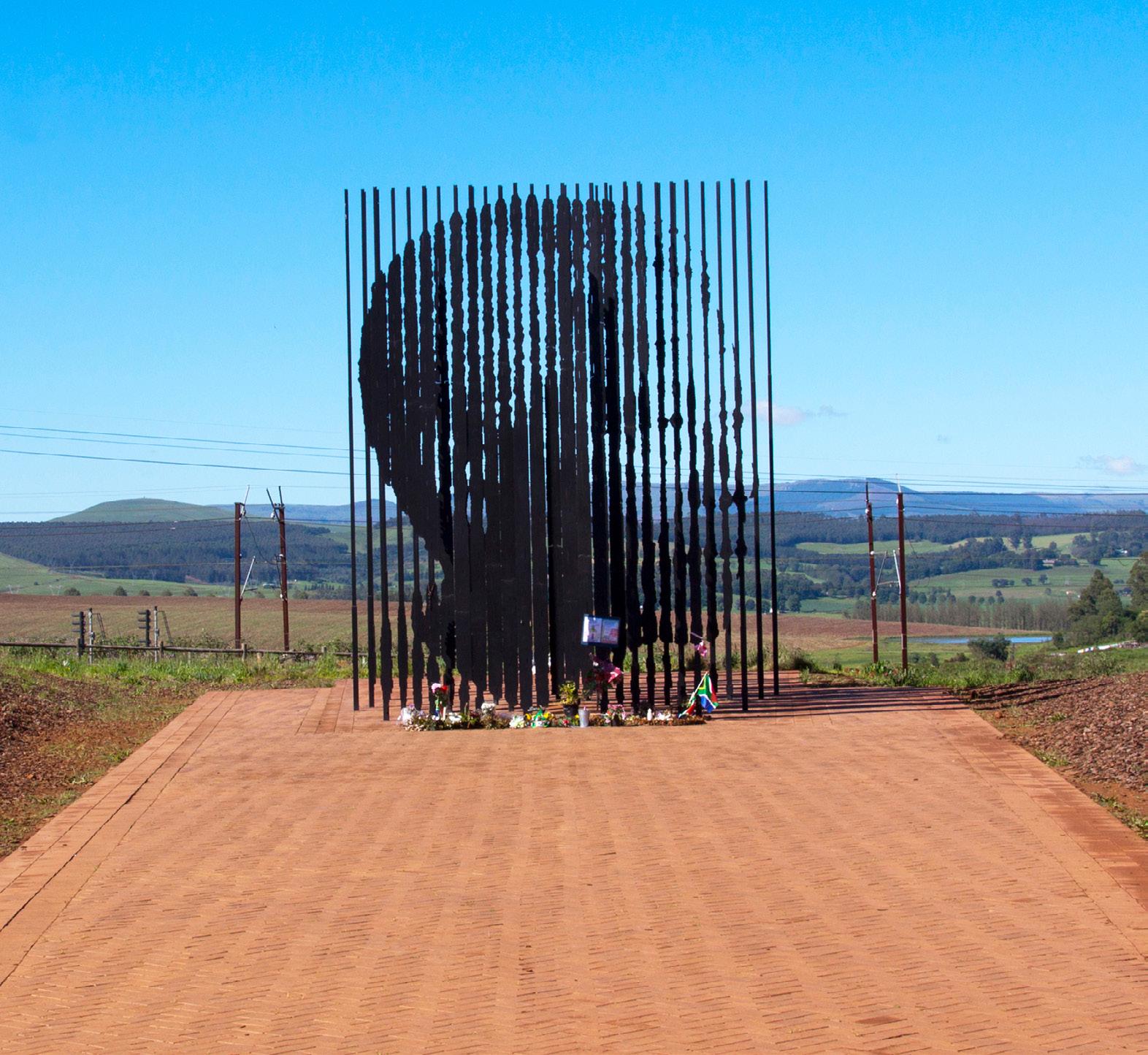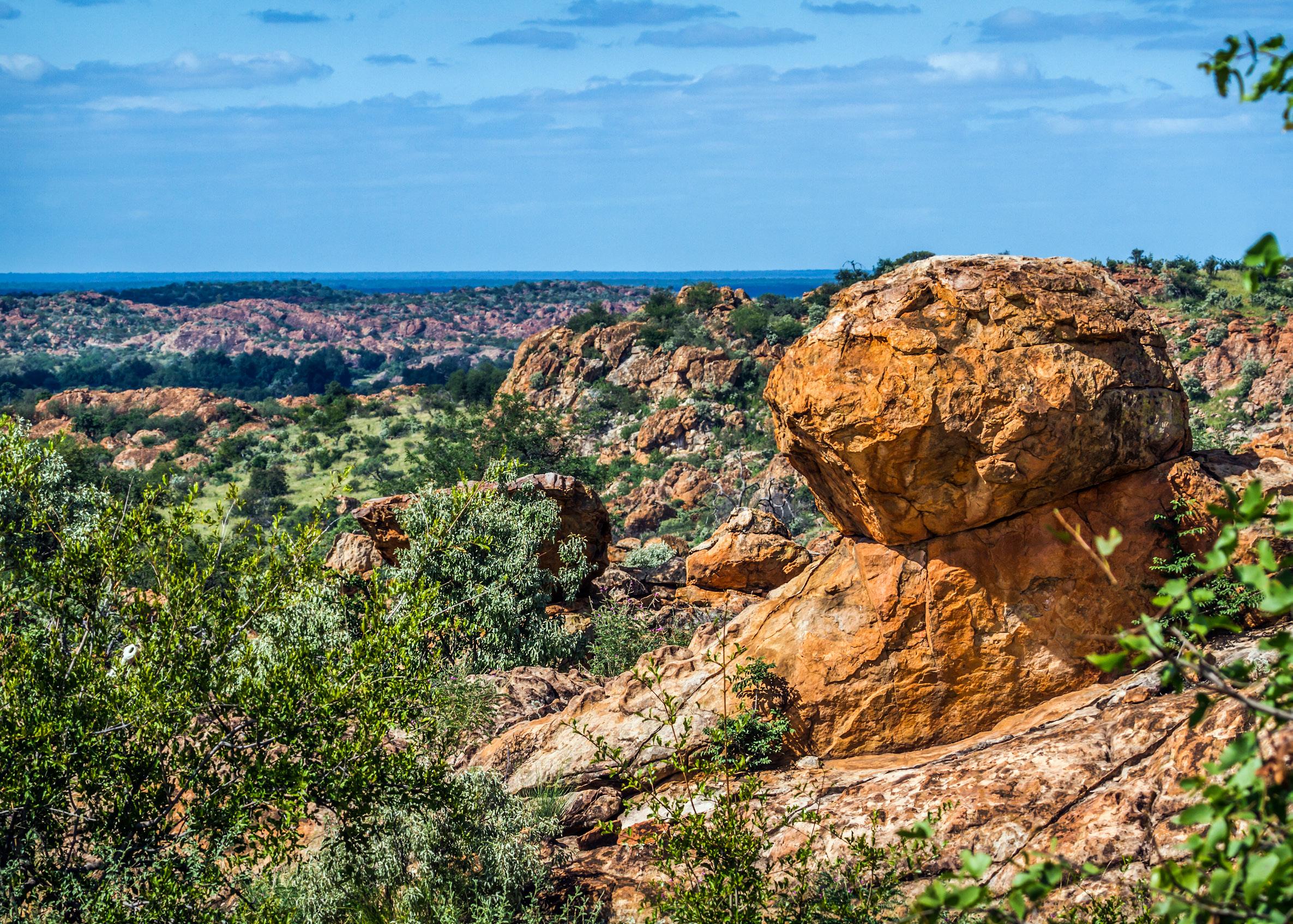
9 minute read
A Place In History | World Heritage Sites
South Africa's 12 UNESCO World Heritage Sites
By Fiona Wakelin & Shumirai Chimombe
From the remnants of a time billions of years into the past, to colourful scenery and the legacy of one of the world’s most respected statesmen, South Africa is home to twelve UNESCO World Heritage Sites. They consist of four natural sites, seven cultural sites and one mixed site. Here we look at four cultural sites which are symbols of South Africa’s storied past.
The Nelson Mandela Legacy Sites
Consisting of 14 component parts located around the country, each of these sites is related to a significant turning point of South Africa’s political history.
“These places reflect key events linked to the long struggle against the apartheid state; Mandela’s influence in promoting understanding and forgiveness; and belief systems based on philosophies of non-racialism, Pan-Africanism and ubuntu, a concept that implies humanity is not solely embedded in an individual.” - UNESCO
The legacy sites include:
Liliesleaf (Johannesburg)
A national heritage site which served as the secret headquarters and nerve centre of the ANC, SACP, Umkhonto we Sizwe and the Congress Alliance between 1961 and 1963. On 11 July 1963, the police, acting on a tip-off, raided Liliesleaf and arrested the core leadership of the underground liberation movement. Following the raid, ten people were put on trial to face charges of 193 counts of sabotage against the state. Nelson Mandela, Walter Sisulu, Denis Goldberg, Govan Mbeki, Ahmed Kathrada, Lionel ‘Rusty’ Bernstein, Raymond Mhlaba, James Kantor, Elias Motsoaledi and Andrew Mlangeni. Kantor and Bernstein were acquitted but the other eight were found guilty and sentenced to life in prison.

Walter Sisulu Square of Dedication (Kliptown, Soweto)
One of the most historically significant and vibrant places in Johannesburg, where the historic signing and adoption of the Freedom Charter took place on 26 June 1955. The square was officially opened by President Mbeki 50 years later, and it consists of a range of cultural attractions and historical monuments and it is a national heritage site.
16 June 1976: the Streets of Orlando West (Johannesburg)
Now commemorated as Youth Day, this day honours the youth who were ambushed by the apartheid regime police in Soweto as thousands of black students protested against an official order which made Afrikaans compulsory in black townships. Over 500 youths were killed, marking this day as a significant turning point in the history of the liberation struggle.
University of Fort Hare and ZK Matthews House (Alice, Eastern Cape)
A key institution in higher education for black Africans from 1916 to 1959, the university offered Western-style academic education to students from across sub-Saharan Africa, creating a black African elite who later became leaders of their countries including Kenneth Kaunda, Seretse Khama, Yusuf Lule, Julius Nyerere, Robert Mugabe and Joshua Nkomo. Leading anti-Apartheid activists included Nelson Mandela, Govan Mbeki and Oliver Tambo of the ANC, Mangosuthu Buthelezi of the IFP, Robert Sobukwe of the Pan Africanist Congress, and Desmond Tutu. Zachariah Keodirelang Matthews - Z.K. Matthews - was one of the first graduates of the University of Fort Hare (1924) and became the most influential black academic of his time. In the 1930s, 1940s and 1950s, he worked as an academic at Fort Hare, where he created a culture of questioning that inspired students who became future African leaders.
The Great Place at Mqhekezweni (Eastern Cape)
This is a site symbolic of traditional leadership where Nelson Mandela lived as a young man under the care of the Regent Jongintaba Dalindyebo after his father passed away. It is the location of the abaThembu traditional authority which survived colonial and apartheid governments as the custodian of cultural rights, customs and the retention of traditional governance. This profoundly influenced Mandela’s notions and style of leadership as a prominent leader in the liberation struggle and as South Africa’s first democratically elected president.
Sterkfontein, Swartkrans and Kromdraai
“Around 40% of the world's known hominid fossils were unearthed in the Cradle of Humankind World Heritage Site, earning it UNESCO World Heritage Site status in 1999.” –Maropeng
The fossil sites Swartkrans, Sterkfontein and Kromdraai are situated in close proximity, not more than three kilometres apart, in the Sterkfontein valley near Krugersdorp and have been the centre of exciting archaeological hominid fossil finds – not least of which is that the African continent is the undisputed Cradle of Humankind.
They contain some of the most important Australopithecine specimens dating back more than 3.5 million years which provide a window to the origins and evolution of humankind. Think Mrs (Mr?) Ples. Think Little Foot. In the Sterkfontein Caves palaeontologists have unearthed some 500 hominids, making the dolomitic limestone site one of the richest fossil repositories in the world. Museums like the Maropeng Visitor Centre and the Ditsong National Museum of Natural History help us understand our origins.
“The serially nominated sites are situated in unique natural settings that have created a suitable environment for the capture and preservation of human and animal remains that have allowed scientists a window into the past. Thus, this site constitutes a vast reserve of scientific data of universal scope and considerable potential, linked to the history of the most ancient periods of humankind.” - UNESCO
Mapungubwe Cultural Landscape
The remains of one of Africa’s largest kingdoms – Mapungubwe - are right up in the northern border of South Africa. Over the course of 400 years it developed into the largest kingdom in the sub-continent before being abandoned in 1300 AD due to climate change. As a powerful state trading with Arabia and India via East African ports, the rise of Mapungubwe was a significant stage in the history of the continent.
The economy of the kingdom was based on agriculture, hunting and trade in ivory, hides and gold. The upper classes lived and were buried on Mapungubwe Hill which is where, in 1934, an archaeologist found the famous gold rhinoceros – a symbol of the wealth of the state and presettler history.
“In 1999 the gold rhinoceros was designated a National Treasure. In 2002 the ANC created the Order of Mapungubwe, the highest honour in South Africa, of which there are four classes: platinum, gold, silver and bronze. Nelson Mandela was the first to receive the highest of these awards, platinum. At the centre of the award is a representation of the gold rhinoceros.” - Sian Tiley-Nel, chief curator, University of Pretoria Museums.
Richtersveld Cultural and Botanical Landscape

The 160 000ha Richtersveld Cultural and Botanical Landscape in the north western part of South Africa was declared a World Heritage Site in 2007. A hybrid of cultural and botanical heritage, the cultural aspect is based on the uniqueness of the pastoralism practised there:
“This site sustains the semi-nomadic pastoral livelihood of the Nama people, reflecting seasonal patterns that may have persisted for as much as two millennia in southern Africa. It is the only area where the Nama still construct portable rushmat houses (haru om) and includes seasonal migrations and grazing grounds, together with stock posts. The pastoralists collect medicinal and other plants and have a strong oral tradition associated with different places and attributes of the landscape.” – UNESCO.
The botanical side of things is actually intrinsically linked with the land management processes by the Nama in this mountainous desert region, which have ensured the protection of the Karoo vegetation and ensured a balance between people and the environment. The seasonal, nomadic pastoralism is “ a practice that was once much more widespread over southern Africa, and which has persisted for at least two millennia; the Nama are now its last practitioners.” - UNESCO
The Pleistocene Occupation Sites of South Africa
UNESCO indicated that these sites provide the most varied and bestpreserved record known of the development of modern human behaviour, reaching back as far as 162 000 years. “Symbolic thought and advanced technologies are exemplified by evidence of ochre processing, engraved patterns, decorative beads, decorated eggshells, advanced projectile weapons and techniques for toolmaking, and microliths.”
The three sites are:
• Diepkloof Rock Shelter close to Elands Bay, Western Cape - this site contains one of the most complete and continuous Middle Stone Age archaeological sequences in Southern Africa. This has allowed scientists to reconstruct in detail the lives of our ancestors, the environment in which they thrived, and their adaptation over the course of the millennia to an evolving environment. The site also contains rock art dating back to San hunter-gatherers, Khoe pastoralists and the colonial period.
• Pinnacle Point Site Complex in Mossel Bay, Western Cape - these sites, which are at the centre of the archaeologically rich Cape south coast, form part of the Cradle of Human Culture which traces the origins and development of human culture over the past 160 000 years and, in the process, it also uncovers what it means to be human. The Pinnacle Point sites are of great significance as they changed the way scientists contemplated the origins of ‘modern’ humans (homo sapiens) and they hold a unique record of the climate from about 400 000 to 30 000 years ago.
• Sibudu Cave in KwaDukuza, KwaZulu-Natal - this is considered to be one of South Africa’s most important archaeological sites, significant for understanding the behavioural origins of modern humans’ The area has evidence of some of the earliest examples of modern human technology, with a large collection of welldated and well-preserved middle Stone Age deposits. The cave has a long record of occupation between 77 000 and 35 000 years ago. One of its most renowned discoveries are 65 000-year old bone arrowheads, the earliest yet discovered, as well as sea-shell beads older than 70 000 years.
Sources: UNESCO | Robben Island Tours | Frontline | Maropeng | The Conversation | SA-V | WWF | Lilieslief official website | Artefact

